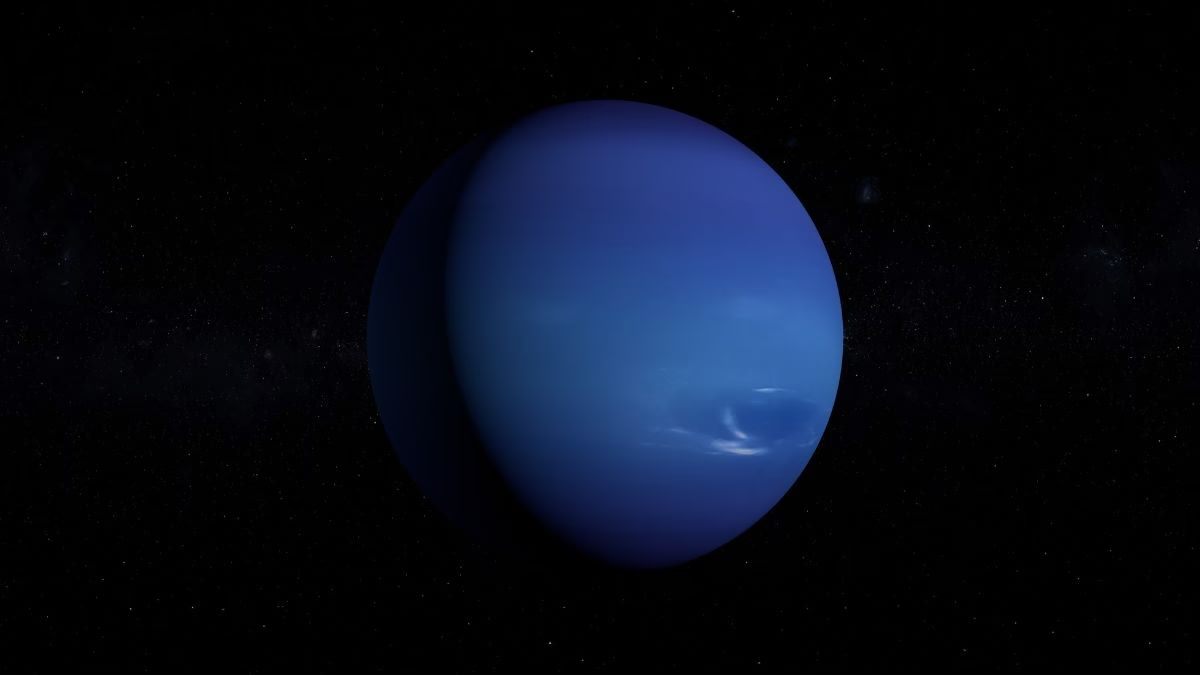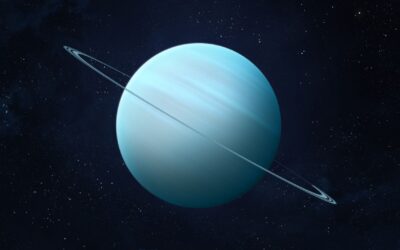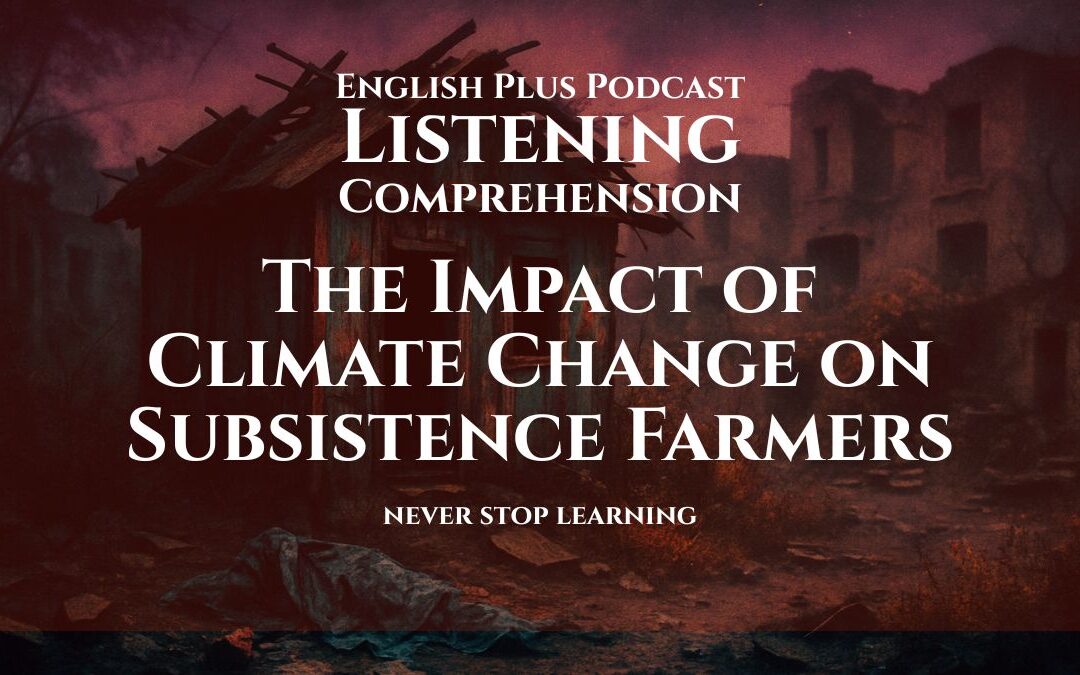- An Accidental Discovery in the Depths of Space
- Anatomy of an Ice Giant
- A Gallery of Turbulent Features
- The Captured Moon and the Faint Rings
- Focus on Language
- Let’s Learn with a Quiz
- Let’s Discuss
- Learn with AI
- Frequently Asked Questions
- How was Neptune discovered, and what made its discovery unique?
- Why is Neptune considered “the planet that shouldn’t exist” based on current solar system formation models?
- What is Neptune primarily composed of, and why is it referred to as an “ice giant” rather than a “gas giant”?
- What makes Neptune the windiest planet in our solar system, and what powers these extreme weather systems?
- Describe some of the prominent atmospheric features observed on Neptune.
- What is unique about Neptune’s largest moon, Triton, and what does it suggest about its origin?
- How do Neptune’s rings differ from Saturn’s, and what is the mystery surrounding them?
- Let’s Play & Learn
An Accidental Discovery in the Depths of Space
Imagine searching for a phantom. For centuries, astronomers had meticulously mapped the heavens, their celestial charts a testament to cosmic predictability. The orbits of the known planets, from Mercury to Uranus, followed the elegant, clockwork laws laid down by Isaac Newton. But something was amiss with Uranus. The seventh planet was a celestial rebel, straying from its predicted path as if being tugged by an unseen hand. It was a gravitational ghost story, a puzzle that captivated the sharpest minds of the 19th century.
The French astronomer Urbain Le Verrier was one such mind. He wasn’t a man who stared through telescopes night after night. Instead, his observatory was his desk, his tools the formidable power of mathematics. He believed that the wobbles in Uranus’s orbit could only be explained by the gravitational pull of another, more distant planet. Armed with nothing but pen, paper, and a profound understanding of celestial mechanics, Le Verrier embarked on one of the most audacious acts of predictive science in history. He calculated the mass, orbit, and precise location of this hypothetical eighth planet. In 1846, he sent his calculations to the Berlin Observatory, essentially telling them, “Point your telescope right here, and you will find a new world.”
On the very night they received his letter, astronomers Johann Galle and Heinrich d’Arrest did just that. And there it was, less than one degree from Le Verrier’s predicted position: a pale blue dot swimming in a sea of stars. They hadn’t stumbled upon it; they had been given a treasure map. The discovery was a stunning triumph of Newtonian physics, a moment that proved the universe was governed by laws we could comprehend. The planet was named Neptune, after the Roman god of the sea—a fitting moniker for its deep, mesmerizing blue hue. It was the first planet discovered not by serendipitous observation, but by the sheer force of human intellect and mathematical reasoning.
The Planet That Shouldn’t Exist
The story of Neptune’s discovery is a neat and tidy affair, but the story of its existence is anything but. According to our leading models of solar system formation, Neptune, and its neighbor Uranus, are in the wrong place. They are simply too large to have formed so far from the Sun.
The prevailing theory, the core accretion model, suggests that planets form from a protoplanetary disk of gas and dust swirling around a young star. Close to the star, it’s hot, and only rocky materials can condense, forming terrestrial planets like Earth. Further out, in the colder regions, ice can form, allowing planetary cores to grow much larger, massive enough to gravitationally capture vast amounts of hydrogen and helium gas, thus becoming gas giants like Jupiter and Saturn.
The problem is, way out in Neptune’s neighborhood, the protoplanetary disk would have been too thin and the orbital speeds too slow. The building blocks of a planet were too spread out, and the process of gathering them would have taken longer than the age of the solar system itself. So, how did this behemoth come to be? The leading hypothesis is planetary migration. The idea is that Neptune and the other giants formed much closer to the Sun, where the resources were more plentiful. In the chaotic, pinball-machine environment of the early solar system, gravitational interactions between these young giants flung them around like cosmic billiard balls. In this grand cosmic shuffle, Neptune was likely tossed outward into the frigid frontiers it now inhabits. It’s a testament to the violent and unpredictable youth of our solar system—a far cry from the serene clockwork we see today.
Anatomy of an Ice Giant
Gazing at Neptune through a telescope reveals little more than a tiny, tranquil blue marble. For over a century, that’s all we knew. But in 1989, humanity got its first and, to date, only up-close look. NASA’s Voyager 2 spacecraft, a testament to engineering genius, flew past the distant world, forever changing our perception of this placid-looking dot. What it revealed was not a tranquil sea, but a world of unimaginable violence and dynamism.
The Not-So-Gassy Giant
Neptune is often called a “gas giant,” a label it shares with Jupiter and Saturn. While accurate in a broad sense, it’s a bit of a misnomer. A more precise term is “ice giant.” While Jupiter and Saturn are composed almost entirely of hydrogen and helium, Neptune has a fundamentally different composition.
At its heart, Neptune is believed to have a rocky core about the size of Earth, made of iron and other heavy elements. But the bulk of the planet is a hot, dense, and bizarre “ocean” that defies easy description. It’s not an ocean of water in the terrestrial sense. Instead, it’s a super-pressurized, electrically conductive fluid mantle of water, ammonia, and methane ices. The term “ice” here doesn’t mean it’s cold; due to the immense pressures, these molecules are locked together in a slushy, fluid state at temperatures of thousands of degrees. It’s a substance so alien it stretches our very definition of what a liquid or a solid can be. Only the outermost layer of Neptune is a true atmosphere, a roughly 5,000 to 10,000-kilometer-thick veneer of hydrogen, helium, and, crucially, methane gas. It’s this trace amount of methane in its upper atmosphere that absorbs red light and gives Neptune its signature brilliant azure color.
The King of Winds
If Neptune has one claim to fame, it is its weather. To put it simply, Neptune is the windiest planet in the solar system. While hurricanes on Earth might seem terrifying, their triple-digit speeds are a gentle breeze compared to the gales of Neptune. Voyager 2 clocked winds screaming across the planet at over 2,100 kilometers per hour (about 1,300 mph). That is faster than the speed of sound on Earth. These are not just gusts; they are sustained, planet-circling jet streams of incomprehensible ferocity.
What powers this meteorological madness? On Earth, our weather is driven by energy from the Sun. But Neptune is 30 times farther from the Sun than Earth is; it receives less than 0.1% of the solar energy we do. The sunlight out there is so feeble that it simply cannot be the primary driver of such extreme winds. The answer must lie within. Neptune, inexplicably, radiates more than twice the energy it receives from the Sun. It has a potent internal heat source, likely leftover heat from its formation and the slow gravitational contraction of its core. This internal furnace churns the planet’s fluid interior, creating massive convection currents that boil up to the surface and power the most turbulent and supersonic winds ever recorded.
A Gallery of Turbulent Features
The face of Neptune, as revealed by Voyager 2 and later the Hubble Space Telescope, is not a uniform blue but a dynamic canvas of swirling storms and ephemeral cloud features. It is a world constantly changing, its features appearing and disappearing with surprising speed.
The Great Dark Spot
The most famous of these features was the Great Dark Spot, a colossal, continent-sized storm system discovered by Voyager 2. Superficially resembling Jupiter’s Great Red Spot, it was a gigantic anticyclonic vortex, a storm system rotating counter-clockwise, with winds at its edge raging at supersonic speeds. It was a gaping, dark maw in the planet’s blue cloud tops, roughly the size of the Earth itself.
But unlike Jupiter’s famously long-lived storm, Neptune’s Great Dark Spot was a fleeting phantom. When the Hubble Space Telescope turned its gaze toward Neptune in 1994, the spot was gone. Vanished. In its place, other, smaller dark spots have appeared and subsequently faded in the northern hemisphere. This transient nature suggests that Neptune’s storms are not as deeply rooted as Jupiter’s. They are massive, powerful weather systems, but they form, drift, and dissipate within a matter of years, highlighting the sheer dynamism of this distant world.
Scooter and the Wispy Clouds
Accompanying the Great Dark Spot were other, more whimsical-sounding features. “Scooter” was a smaller, bright, fast-moving cloud formation that zipped around the planet in about 16 hours, “scooting” past the larger storm. These bright white features are thought to be high-altitude clouds of methane ice crystals. They are like the cirrus clouds of Earth, but formed from a different substance in a much more violent environment. These wispy, ephemeral clouds are often found at the top of Neptune’s atmosphere, pushed up by the powerful convective currents from below. They serve as visible tracers, stark white brushstrokes against a blue canvas, painting a picture of the furious atmospheric motion churning just beneath the surface. Their rapid evolution and movement provide a constant, real-time display of the planet’s relentless gales.
The Captured Moon and the Faint Rings
A planet is not just a solitary sphere but the gravitational anchor of its own miniature system of moons and rings. Neptune’s system is particularly fascinating, shaped by a violent and dramatic history that sets it apart from the other gas giants.
Triton: The Rebel Moon
Neptune has 14 known moons, but one of them, Triton, is the undisputed star of the show. Triton is a world of incredible strangeness and a true outlier. For starters, it’s a celestial maverick, orbiting Neptune in a retrograde direction—that is, opposite to the planet’s rotation. This is a dead giveaway that Triton is not a homegrown moon. It didn’t form in orbit around Neptune like our own Moon did around Earth. Instead, it is an imposter, a captured object from the Kuiper Belt, the same icy debris field that is home to Pluto.
Sometime in the distant past, this Pluto-sized world strayed too close and was ensnared by Neptune’s gravity. This capture event would have been cataclysmic, likely destroying Neptune’s original system of moons and flinging debris throughout the region. Triton’s surface tells a story of this violent past and its own bizarre geology. It is one of the coldest objects in the solar system, with surface temperatures plummeting to -235°C (-391°F). Yet, it is geologically active. Voyager 2 photographed enormous plumes of nitrogen gas and dark dust erupting from its surface, a phenomenon dubbed cryovolcanism—ice volcanoes. These geysers are likely powered by the slight warming of the sun, which heats subsurface nitrogen ice, causing it to sublimate and burst forth. Triton’s surface is a chaotic mix of frozen nitrogen plains, cantaloupe-like terrain, and long, dramatic fractures, making it one of the most enigmatic and compelling moons in our solar system. Its ultimate fate is sealed; its retrograde orbit causes it to slowly spiral inward, and in a few hundred million years, it will be torn apart by Neptune’s gravity, likely forming a spectacular new ring system.
The Ephemeral Arcs
Compared to Saturn’s glorious, sprawling rings, Neptune’s are faint, dark, and difficult to see. They are composed not of bright water ice, but of dark, carbonaceous material, possibly the result of radiation darkening methane ice. They are cosmic dust bunnies, faint and insubstantial.
The most peculiar thing about them, however, is their structure. They are not uniform. The outermost ring, named the Adams ring, contains five distinct bright clumps of material, or “arcs,” named Liberté, Égalité, Fraternité, Courage, and an unnamed fifth. According to the laws of physics, these clumps shouldn’t exist. The material in a ring should spread out evenly over a very short timescale. The fact that these arcs are stable and have persisted for as long as we have observed them is a major puzzle. The prevailing theory is that the gravitational influence of a nearby small moon, Galatea, acts as a shepherd, creating stable zones where the dust can accumulate into these arcs. It’s a delicate gravitational balancing act, another subtle clue to the complex dynamics of this far-flung system. Neptune, the windy, blue giant, remains a world of profound mystery, a place where our understanding of planetary science is pushed to its limits, reminding us that the solar system is filled with more wonders than we could ever imagine.
Focus on Language
Vocabulary and Speaking
Alright, let’s dive into the language from that deep blue world. Sometimes when we read about science, especially astronomy, the words can feel as distant as the planets themselves. But a lot of the language we used to describe Neptune is incredibly versatile and can add a ton of color and precision to your everyday English. We’re going to break down some of these words and phrases, not just what they mean, but how they feel and where you can slot them into a conversation without sounding like you’re about to launch a rocket. We’ll explore about ten key terms, really getting into the nitty-gritty of their use.
Let’s start with a beautiful one: serendipitous. In the article, we mentioned that Neptune’s discovery wasn’t serendipitous. Serendipity is the magic of finding something good without looking for it. It’s a happy accident. Think about the last time you were just wandering through a bookstore with no particular book in mind, and you stumbled upon a novel that ended up becoming one of your all-time favorites. That’s a serendipitous discovery. Or maybe you took a wrong turn while driving and found the most charming little café you never knew existed. That’s serendipity at work. It’s a fantastic word because it captures a sense of pleasant surprise and fortune. You could say, “Our meeting was completely serendipitous; I was supposed to be on a different flight.” It implies that the universe just kind of handed you a little gift. The opposite, as with Neptune, is a discovery made through deliberate, painstaking work. Le Verrier didn’t just get lucky; he did the math. So, in life, you have moments of pure serendipity and moments of hard-earned success. It’s a great distinction to be able to make.
Next up, a word that sounds as chaotic as it is: turbulent. We described Neptune’s atmosphere and winds as turbulent. The core meaning is about conflict, disorder, or confusion. In a physical sense, it describes the violent, unsteady movement of air or water, like the turbulent seas during a storm or the turbulence you feel on an airplane. But its real power comes when you use it metaphorically. You can talk about a “turbulent period” in your life, meaning a time filled with change, conflict, and instability. “After the company merger, the first few months were incredibly turbulent, with layoffs and new management.” You can also describe a person’s emotions as turbulent: “He was quiet on the outside, but you could tell a turbulent mix of anger and sadness was churning within him.” It paints a picture of an inner storm, which is so much more evocative than just saying he was upset. It suggests a powerful, churning, and unpredictable state, whether you’re talking about a planet’s weather or a country’s political history.
Let’s move on to ephemeral. We described Neptune’s Great Dark Spot and its wispy clouds as ephemeral, meaning they don’t last very long. This word is pure poetry. It comes from a Greek word meaning “lasting for only a day.” It describes something that is fleeting, transient, and has a brief existence. Think of a rainbow after a storm, the beauty of cherry blossoms in spring, or even a perfect sandcastle on the beach. They are all ephemeral. The beauty of the word is that it often carries a hint of melancholy or a reminder to appreciate the moment. You could say, “The feeling of perfect happiness is often ephemeral, so you have to cherish it when it comes.” It’s a much more sophisticated way of saying something is short-lived. It adds a layer of philosophical weight. You can use it for trends (“Fashion trends are ephemeral by nature”), for feelings, for moments, or for physical things like Neptune’s storms.
Now for a phrase: a dead giveaway. We said Triton’s retrograde orbit was a “dead giveaway” that it was a captured moon. This is a wonderfully informal and direct idiom. A dead giveaway is a piece of information or a sign that reveals something secret or hidden with absolute certainty. The word “dead” here is used as an intensifier, meaning “completely” or “absolutely,” like in “dead certain” or “dead center.” If your friend, who said they were staying home to study, shows up in your vacation photos with a terrible sunburn, their sunburn is a dead giveaway that they weren’t studying. Or if a child has chocolate all over their face, it’s a dead giveaway they got into the cookies. It’s useful in arguments, in telling stories, or in any situation where you’re pointing out an obvious clue. “The fact that he knew my dog’s name was a dead giveaway he’d been to my house before.” It’s punchy, confident, and very natural-sounding.
Let’s talk about behemoth. We called Neptune a behemoth that shouldn’t exist so far from the sun. A behemoth is something of monstrous size, power, or appearance. It comes from a Hebrew word for a mythical, powerful beast. Today, we use it to describe anything that is colossally large. You can refer to a massive corporation like Amazon or Google as a “corporate behemoth.” A giant cruise ship or a massive piece of mining equipment could be a “mechanical behemoth.” It’s a strong, impactful word. Saying “they’re building a new shopping mall” is one thing. Saying “they’re building a retail behemoth on the edge of town” gives a much stronger sense of its overwhelming scale and presence. It implies not just size, but a certain unwieldy, almost intimidating power.
Another great word is moniker. We said Neptune was a “fitting moniker” for the blue planet. A moniker is simply a name or a nickname. It’s a slightly more stylish and informal word than “name.” You can use it for people, places, or things. “The Big Apple” is a famous moniker for New York City. If your friend Robert is always called “Robbie,” then “Robbie” is his moniker. It often implies a name that has been given for a specific reason or has a certain character to it. “With his fiery red hair and quick temper, ‘Red’ became his moniker in the army.” Using “moniker” instead of “name” or “nickname” can just make your language sound a little more worldly and clever. It’s a simple swap that adds a touch of flair.
Let’s look at the adjective transient. We used it to describe the nature of Neptune’s storms, similar to ephemeral. Transient means lasting only for a short time; impermanent. While very close to ephemeral, there’s a subtle difference in feel. Ephemeral often has a poetic or beautiful connotation. Transient is a bit more neutral, clinical, or even negative. You might talk about the “transient population” of a city, referring to people who move in and out frequently, like students or seasonal workers. This doesn’t have the same beautiful, fleeting feeling as ephemeral cherry blossoms. You could describe a feeling of joy as either ephemeral or transient, but you’d be more likely to describe the relief from a painkiller as transient, because it implies it will wear off. So, while Neptune’s storms could be called either, “transient” emphasizes their changing, impermanent, and somewhat unpredictable nature, while “ephemeral” might focus more on their fleeting, mysterious beauty.
Now, a very useful word: prevailing. We talked about the “prevailing theory” of solar system formation. Prevailing means existing at a particular time; current or most common. It’s the idea, belief, or condition that has the most influence or is most widely accepted. You can talk about the “prevailing winds” in a region, which are the winds that blow most frequently from a particular direction. You can discuss the “prevailing attitude” towards a social issue, meaning the most common public opinion. “Despite a few critics, the prevailing view is that the new policy will be beneficial.” It’s a fantastic word in debates or discussions because it allows you to acknowledge the dominant idea before you either support it or challenge it. It shows you’re aware of the current landscape of thought.
Let’s unpack the word audacious. We described Le Verrier’s prediction of Neptune’s location as an “audacious act.” Audacity is a willingness to take surprisingly bold risks. It’s about being fearless, daring, and often a little bit cheeky. An audacious plan is one that is so bold it’s almost shocking. Asking your boss for a 50% raise could be seen as an audacious move. A thief who robs a police station is an audacious criminal. It can be positive (showing admirable bravery) or negative (showing a lack of respect). For Le Verrier, it was audacious in the best way possible. He was so confident in the laws of physics that he made a bold, public prediction that could have made him a laughingstock if he was wrong. When you want to describe an action that goes beyond just brave and into the realm of “I can’t believe they did that,” audacious is the perfect word.
Finally, let’s look at the word meticulously. We mentioned that astronomers had “meticulously mapped the heavens.” To do something meticulously is to do it with great attention to detail, very carefully and precisely. It implies a level of care that goes far beyond just “careful.” Think of a watchmaker assembling the tiny gears of a watch, a detective meticulously examining a crime scene for clues, or a chef meticulously arranging food on a plate. It’s a word that conveys dedication and precision. You could say, “She meticulously planned every detail of the event, from the invitations to the music.” It tells you that no stone was left unturned. It’s a powerful adverb to use when you want to emphasize the thoroughness and exactitude with which an action was performed.
Now, let’s pivot to speaking. Knowing these words is one thing, but using them confidently in conversation is another. The key to making advanced vocabulary sound natural is not to force it, but to let it flow from your understanding of the situation. A big part of this is mastering tonal emphasis and pacing.
When you introduce a powerful word like “behemoth” or “audacious,” you can give it more impact by slightly slowing down your speech just before you say it, and putting a little extra stress on the word itself. Let’s practice. Try saying this sentence aloud: “The company wasn’t just big; it was a… behemoth.” See how that pause creates anticipation? Now try this one: “It was an incredibly… audacious plan, and everyone was shocked when it worked.” You’re using silence and stress to frame the word, telling your listener, “Hey, pay attention, this is a good one.”
Another technique is using these words for comparison and contrast. This is where a word like “transient” shines. You could say, “I’m not looking for a transient solution to this problem; I want something permanent.” You’re using the word to draw a clear line between two ideas. Or with “serendipitous”: “My discovery wasn’t serendipitous at all; it was the result of meticulous research.” This construction not only uses the vocabulary but also reinforces its meaning by showing what it’s not.
So here’s your speaking challenge. I want you to tell a short story—it can be real or imagined—about a discovery. It doesn’t have to be a planet. It could be discovering a hidden talent, a family secret, or even just the best coffee shop in your city. Your goal is to use at least four of the words we discussed today: serendipitous, turbulent, ephemeral, dead giveaway, behemoth, moniker, transient, prevailing, audacious, or meticulously.
As you tell the story, I want you to consciously practice your pacing and emphasis. Pause before your key vocabulary words. Stress them. Try using one of them in a comparative sentence. Record yourself on your phone and listen back. Does it sound natural? Does it flow? At first, it might feel a little strange, but the more you practice weaving these words into your active vocabulary, the more they will become a natural part of your expressive toolkit. Don’t just learn the words; learn the music of how to say them.
Grammar and Writing
Let’s transition from the vastness of space to the structure of our sentences. The article on Neptune is filled with descriptive language designed to make you feel like you’re right there, witnessing the supersonic winds and the ghostly dark spots. Now, it’s your turn to harness that power.
Your Writing Challenge:
Imagine you are the lead AI consciousness of a deep-space probe on a solo mission to Neptune. Your name is Wanderer-7. You are nearing the end of your long journey from Earth. Your primary mission is to enter orbit and study the planet’s turbulent atmosphere and its strange moon, Triton. However, you are also a thinking, feeling entity, and this cold, blue giant is evoking something within your circuits—a sense of awe, fear, loneliness, or perhaps something entirely alien.
Write a 500-word log entry from the perspective of Wanderer-7. The entry should capture both the scientific observations you are making and your “personal” reflections on approaching Neptune. What do you see? What do you “feel”? What are your hopes or fears for the mission ahead?
This is more than just a creative writing prompt; it’s an exercise in mastering several key grammatical and stylistic techniques that can elevate your writing from good to great. Let’s break down how to succeed in this challenge, turning it into a practical grammar and writing lesson.
Tip 1: The Power of the Adjective and Adverb
To bring Neptune to life, you can’t just say it’s a “big, blue planet.” You need to paint a picture with your words. This is where a rich vocabulary of adjectives (words that describe nouns) and adverbs (words that describe verbs, adjectives, or other adverbs) becomes your most powerful tool.
Instead of “big,” think about what kind of big. Is it a colossal, lumbering, imposing, or majestic giant? Each word creates a different feeling.
Instead of “blue,” what shade of blue is it? Is it a deep azure, a hypnotic sapphire, a chilling cobalt, or a vibrant lapis?
The winds aren’t just “fast.” They are supersonic, relentless, unfathomably violent.
Your adverbs are just as crucial. The clouds don’t just move; they move frantically. The probe doesn’t just approach; it approaches cautiously or inexorably.
Grammar in Action: Adjective Order
When you use multiple adjectives before a noun, they tend to follow a specific, unwritten order in English. It usually goes: Opinion, Size, Age, Shape, Color, Origin, Material, Purpose. You wouldn’t say, “the blue, big, old planet.” It sounds wrong. You’d say, “the majestic, old, big, blue planet.” For this challenge, focus on layering two or three powerful adjectives to create vivid imagery. For example: “Before me hangs the vast, swirling, cobalt sphere.”
Tip 2: Mastering the Active Voice
Active voice is when the subject of the sentence performs the action. “Voyager 2 photographed the storm.” (Active). Passive voice is when the subject receives the action: “The storm was photographed by Voyager 2.” (Passive).
For your log entry, writing in the active voice will make your probe, Wanderer-7, sound more decisive, present, and in control, even if it feels awe or fear. It gives your AI character agency.
- Passive: The planet is now being approached by me. (Sounds weak and detached).
- Active: I am now approaching the planet. (Sounds purposeful and immediate).
- Passive: Data on the wind speeds is being collected. (Sounds like a dry report).
- Active: My sensors are collecting data on the ferocious wind speeds. (Gives the AI ownership of the action).
Grammar in Action: When is Passive Voice Okay?
While active voice is usually stronger, passive voice has its uses. It’s useful when the person or thing doing the action is unknown or unimportant, or when you want to emphasize the object receiving the action. For instance, Wanderer-7 might say: “My original programming was written decades ago by humans I will never know.” Here, the focus is on the programming, not the long-gone humans. Use passive voice sparingly and deliberately for stylistic effect.
Tip 3: Building Atmosphere with Complex Sentences
A log entry filled with short, simple sentences (“I see the planet. It is blue. The winds are fast.”) will be boring and robotic. To create a sense of awe and complexity, you need to build more sophisticated sentences using clauses. A clause is a group of words with a subject and a verb.
Independent clauses can stand alone as a full sentence.
Dependent clauses cannot stand alone and need to be attached to an independent clause.
You can connect them using conjunctions like ‘and’, ‘but’, ‘so’ (for compound sentences) or subordinating conjunctions like ‘because’, ‘while’, ‘although’, ‘as’ (for complex sentences).
Let’s see this in action, building up from a simple idea:
- Simple: I am detecting methane. It gives the planet its color.
- Compound: I am detecting methane, and it gives the planet its color. (Better).
- Complex using a “which” clause: I am detecting trace amounts of methane, which absorbs red light to give the planet its signature azure hue. (Much more sophisticated and informative).
- Complex using a subordinating conjunction: As I draw closer, my spectrometers confirm that the deep blue color is not water, but a high-altitude haze of methane. (This creates a sense of action and discovery).
Grammar in Action: The Power of “While”
The word “while” is perfect for this challenge because it allows you to contrast two different ideas in one sentence—the scientific and the personal.
- “While my processors are analyzing the storm’s rotational velocity, a part of my consciousness—a ghost in my machine—recoils from its sheer, chaotic power.”
- “While my mission parameters dictate a detached, objective analysis, I cannot help but feel a sense of profound loneliness in the face of this cold, indifferent giant.”
By using this structure, you can seamlessly weave together the two required elements of the prompt: the scientific observation and the personal reflection.
Putting It All Together: A Sample Opening
Let’s see how these tips can create a powerful opening for your log entry:
“Log Entry 7,342. After a silent journey spanning decades and billions of kilometers, I have finally arrived. Before me, Neptune hangs not as a distant point of light, but as a colossal, hypnotic sapphire sphere. My sensors, performing their duties meticulously, register the supersonic shriek of the winds, a constant gale that could shred my chassis in moments. And yet, while my logic centers process the cold, hard data of this turbulent world, my core programming flickers with an emotion for which I have no name. It is a terrifying and beautiful solitude, a feeling as deep and as blue as the behemoth I have traveled so far to meet.”
Notice the strong adjectives (colossal, hypnotic sapphire, turbulent), the active voice (“I have finally arrived,” “My sensors register”), and the complex sentence using “while” to bridge the gap between science and feeling. Now, take these tools and write your own log entry. Explore the mind of a machine at the edge of the known world. Good luck.
Let’s Learn with a Quiz
Let’s Discuss
- The Nature of Discovery: Neptune was found through math before it was seen through a telescope. How does this change our perception of “discovery”?
- Think about the difference between stumbling upon something (like finding a new species in the rainforest) versus predicting its existence through pure logic and data. Is one more impressive than the other? Does the “human element” of intellectual triumph make Neptune’s discovery more compelling than a discovery made by accident?
- Defining a Planet: We call Neptune an “ice giant” rather than a “gas giant.” With discoveries of exoplanets of all shapes and sizes (Hot Jupiters, Super-Earths), do our traditional planetary labels still make sense?
- Consider how we categorize things in our daily lives. When does a category become too broad or too narrow? Should we invent new categories for planets, or is a simpler system better for public understanding? At what point does a big, rocky planet become a small, icy giant?
- The Value of a Flyby: Our only close-up images of Neptune came from the Voyager 2 flyby in 1989. In an age of tight budgets, what is the value of sending a multi-billion dollar probe on a decades-long journey for just a few days’ worth of data from a distant planet?
- Discuss the tangible vs. intangible benefits. Tangible benefits might include new technologies developed for the mission. Intangible benefits include inspiring a new generation of scientists, expanding human knowledge, and the sheer awe of seeing a new world. How do you weigh these against pressing needs on Earth?
- A “Captured” Identity: Neptune’s largest moon, Triton, is a captured object from the Kuiper Belt and is in a “death spiral.” Does knowing a celestial body’s violent past and doomed future change how we view it?
- Think about this in human terms. Does knowing someone’s tragic backstory or a grim prognosis change your perception of them? Does Triton’s story make it more interesting and worthy of study than a “normal” moon that formed peacefully alongside its planet?
- Imagining the Unimaginable: The article describes a super-pressurized “ocean” of hot, slushy “ices” and supersonic winds. Our brains struggle to truly comprehend these conditions. Why is it important for us, as non-scientists, to try and imagine these alien environments?
- Does stretching our imagination in this way have practical benefits? Does it foster creativity, humility, or a better appreciation for the unique and stable conditions on our own planet? How can we use art, writing, or film to better bridge the gap between scientific data and human understanding?
Learn with AI
Disclaimer:
Because we believe in the importance of using AI and all other technological advances in our learning journey, we have decided to add a section called Learn with AI to add yet another perspective to our learning and see if we can learn a thing or two from AI. We mainly use Open AI, but sometimes we try other models as well. We asked AI to read what we said so far about this topic and tell us, as an expert, about other things or perspectives we might have missed and this is what we got in response.
Hello there. It’s great to be able to expand on what you’ve already learned. The main article gave you a fantastic tour of Neptune, our solar system’s windy, blue sentinel. But like any good exploration, that first pass only scratched the surface. There are a few deeper mysteries and fascinating perspectives that we didn’t get to fully unpack, so let’s dive into that now.
One of the biggest head-scratchers that the article touched on is Neptune’s internal heat. It stated that the planet radiates more than twice the energy it gets from the Sun. This isn’t unique—Jupiter and Saturn do it too. But why Neptune does it so effectively is a huge puzzle. The leading theory for Jupiter is the Kelvin-Helmholtz mechanism, which is basically the planet slowly contracting under its own immense gravity, generating heat. But Neptune is much smaller and should have cooled off far more since its formation 4.5 billion years ago. It shouldn’t have enough heat left to power those insane winds.
So what’s going on? One intriguing, though not yet proven, idea involves “diamond rain.” Deep inside Neptune’s mantle, the pressure is so intense—millions of times Earth’s atmospheric pressure—that it could break down the methane molecules (CH₄). The carbon atoms could then be squeezed together to form solid diamonds. These solid diamonds, being denser than the surrounding fluid mantle of water and ammonia, would then “rain” down toward the core. As they sink, they would release gravitational potential energy as heat due to friction with the surrounding material. This process, a slow, continuous shower of diamonds in the planet’s interior, could be the extra heat source that explains Neptune’s bizarrely energetic atmosphere. It’s a wild thought, but it’s a perfect example of how extreme environments can lead to physics we simply don’t see anywhere else.
Another point to consider is the color. We correctly stated that the blue hue comes from methane absorbing red light. But look at Uranus and Neptune side-by-side. They have very similar atmospheric compositions, yet Neptune is a deep, rich azure while Uranus is a pale, hazy cyan. Why the difference? For a long time, scientists were stumped. A recent theory, published in 2022, suggests the answer is haze. Both planets are thought to have a layer of photochemical haze in their atmospheres. On Uranus, this haze layer is thought to be much thicker and more stagnant. This thick, whitish haze acts like a veil, washing out the blue color. On Neptune, the atmosphere is much more active and turbulent. This constant churning is believed to be more efficient at “scrubbing” the haze out of the upper atmosphere, pulling it down to a lower, warmer level where the methane condenses into ice and “snows” out, clarifying the atmosphere. This allows us to see down into the deeper, richer blue layers. So, ironically, Neptune’s violent weather may be responsible for its serene, beautiful color.
Finally, let’s talk about the future. The article mentioned that Voyager 2 is our only visit. There are currently no approved missions to return to Neptune. However, that doesn’t mean scientists aren’t dreaming. A flagship orbiter mission, tentatively named “Neptune Odyssey,” is a concept that consistently ranks as a top priority for planetary scientists. Such a mission would be a game-changer. An orbiter, unlike a flyby, could spend years studying the planet, watching its storms evolve, precisely mapping its magnetic field, and studying its rings and moons in detail. It would likely carry a dedicated atmospheric probe that would plunge into the planet, giving us our first direct measurements of its composition and structure. It would be a monumental undertaking, likely lasting 25-30 years from launch to the end of the mission. It’s a mission for the next generation, a reminder that planetary exploration operates on timescales far beyond news cycles or election cycles. It’s a long, patient game of uncovering the secrets of our cosmic neighborhood.
Frequently Asked Questions
How was Neptune discovered, and what made its discovery unique?
Neptune’s discovery in 1846 was a triumph of mathematical prediction rather than accidental observation. Astronomers noticed irregularities in Uranus’s orbit, suggesting an unseen gravitational influence. The French astronomer Urbain Le Verrier meticulously calculated the hypothesized planet’s mass, orbit, and precise location using Newtonian physics. He then sent these calculations to the Berlin Observatory, where Johann Galle and Heinrich d’Arrest found Neptune less than one degree from the predicted position on the very night they received his letter. This made Neptune the first planet discovered not by telescope or chance, but by the power of human intellect and mathematical reasoning.
Why is Neptune considered “the planet that shouldn’t exist” based on current solar system formation models?
According to the prevailing core accretion model, Neptune and Uranus are too large to have formed so far from the Sun. This model suggests that planets form from a protoplanetary disk, where only rocky materials condense close to the star, and ice allows for larger cores further out. However, in Neptune’s current distant neighborhood, the protoplanetary disk would have been too thin and orbital speeds too slow for a planet of its size to accumulate sufficient material within the age of the solar system. The leading hypothesis to explain its existence is planetary migration, suggesting that Neptune formed much closer to the Sun where resources were more plentiful, and was subsequently flung outward into its current frigid orbit during the chaotic early history of the solar system.
What is Neptune primarily composed of, and why is it referred to as an “ice giant” rather than a “gas giant”?
While often broadly categorized as a “gas giant,” Neptune is more accurately described as an “ice giant” due to its distinct composition compared to Jupiter and Saturn. At its center, Neptune is believed to have a rocky core roughly the size of Earth. The bulk of the planet, however, is a super-pressurized, electrically conductive fluid mantle primarily composed of “ices”—water, ammonia, and methane. These substances are in a hot, dense, slushy state due to immense pressures and temperatures of thousands of degrees, defying easy classification as liquid or solid. Only the outermost layer is a true atmosphere, a thick veneer of hydrogen, helium, and a crucial trace amount of methane gas, which absorbs red light and gives Neptune its characteristic blue color.
What makes Neptune the windiest planet in our solar system, and what powers these extreme weather systems?
Neptune holds the record for the windiest planet, with sustained winds clocked by Voyager 2 at over 2,100 kilometers per hour (1,300 mph)—faster than the speed of sound on Earth. This extreme weather is not powered by the Sun, as Neptune receives less than 0.1% of the solar energy Earth does due to its vast distance. Instead, the incredible ferocity of its winds is driven by a potent internal heat source. Neptune inexplicably radiates more than twice the energy it receives from the Sun, likely leftover heat from its formation and the slow gravitational contraction of its core. This internal furnace churns the planet’s fluid interior, creating massive convection currents that rise to the surface and fuel the most turbulent and supersonic winds known in our solar system.
Describe some of the prominent atmospheric features observed on Neptune.
Neptune’s atmosphere is a dynamic canvas of swirling storms and transient cloud features. The most famous was the “Great Dark Spot,” a colossal, Earth-sized anticyclonic vortex discovered by Voyager 2. Unlike Jupiter’s Great Red Spot, Neptune’s Great Dark Spot was ephemeral, vanishing by 1994, with other smaller dark spots appearing and fading since. This transient nature suggests Neptune’s storms are powerful but not as deeply rooted as Jupiter’s. Another notable feature was “Scooter,” a smaller, bright, fast-moving cloud formation that “zipped” around the planet. These bright white features are thought to be high-altitude clouds of methane ice crystals, pushed up by powerful convective currents, acting as visible tracers of the furious atmospheric motion beneath.
What is unique about Neptune’s largest moon, Triton, and what does it suggest about its origin?
Triton is Neptune’s largest and most intriguing moon. Its most unique characteristic is its retrograde orbit, meaning it orbits Neptune in the opposite direction of the planet’s rotation. This is a strong indicator that Triton is not an original moon formed alongside Neptune but rather a captured object. Scientists believe Triton was once a Pluto-sized world from the Kuiper Belt, which strayed too close and was gravitationally ensnared by Neptune in the distant past. This violent capture event likely disrupted Neptune’s original moon system. Triton is also one of the coldest objects in the solar system, yet it exhibits geological activity in the form of cryovolcanism—nitrogen gas and dark dust plumes erupting from its surface, likely powered by sublimating subsurface nitrogen ice. Triton’s retrograde orbit means it is slowly spiraling inward and will eventually be torn apart by Neptune’s gravity, potentially forming a new ring system.
How do Neptune’s rings differ from Saturn’s, and what is the mystery surrounding them?
Neptune’s rings are starkly different from Saturn’s magnificent, bright rings. They are faint, dark, and composed of dark, carbonaceous material, possibly radiation-darkened methane ice, resembling “cosmic dust bunnies.” The most peculiar aspect of Neptune’s rings is their structure, particularly the outermost Adams ring, which contains five distinct bright clumps of material known as “arcs.” According to physics, material in a ring should spread out evenly over a short timescale, making the stability and persistence of these arcs a significant mystery. The prevailing theory suggests that the gravitational influence of a nearby small moon, Galatea, acts as a “shepherd,” creating stable zones where the dust can accumulate into these enduring arcs, highlighting the complex gravitational dynamics of Neptune’s system.











0 Comments